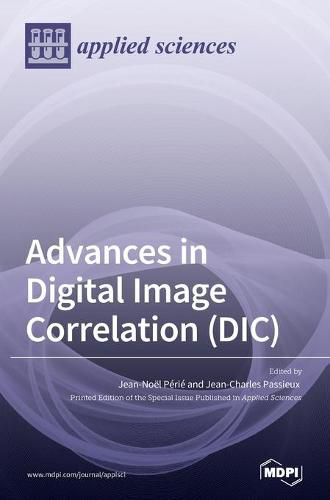Readings Newsletter
Become a Readings Member to make your shopping experience even easier.
Sign in or sign up for free!
You’re not far away from qualifying for FREE standard shipping within Australia
You’ve qualified for FREE standard shipping within Australia
The cart is loading…






This title is printed to order. This book may have been self-published. If so, we cannot guarantee the quality of the content. In the main most books will have gone through the editing process however some may not. We therefore suggest that you be aware of this before ordering this book. If in doubt check either the author or publisher’s details as we are unable to accept any returns unless they are faulty. Please contact us if you have any questions.
Digital image correlation (DIC) has become the most popular full field measurement technique in experimental mechanics. It is a versatile and inexpensive measurement method that provides a large amount of experimental data. Because DIC takes advantage of a huge variety of image modalities, the technique allows covering a wide range of space and time scales. Stereo extends the scope of DIC to non-planar cases, which are more representative of industrial use cases. With the development of tomography, digital volume correlation now provides access to volumetric data, enabling the study of the inner behavior of materials and structures.However, the use of DIC data to quantitatively validate models or accurately identify a set of constitutive parameters remains challenging. One of the reasons lies in the compromises between measurement resolution and spatial resolution. Second, the question of the boundary conditions is still open. Another reason is that the measured displacements are not directly comparable with usual simulations. Finally, the use of full field data leads to new computational challenges.
$9.00 standard shipping within Australia
FREE standard shipping within Australia for orders over $100.00
Express & International shipping calculated at checkout
This title is printed to order. This book may have been self-published. If so, we cannot guarantee the quality of the content. In the main most books will have gone through the editing process however some may not. We therefore suggest that you be aware of this before ordering this book. If in doubt check either the author or publisher’s details as we are unable to accept any returns unless they are faulty. Please contact us if you have any questions.
Digital image correlation (DIC) has become the most popular full field measurement technique in experimental mechanics. It is a versatile and inexpensive measurement method that provides a large amount of experimental data. Because DIC takes advantage of a huge variety of image modalities, the technique allows covering a wide range of space and time scales. Stereo extends the scope of DIC to non-planar cases, which are more representative of industrial use cases. With the development of tomography, digital volume correlation now provides access to volumetric data, enabling the study of the inner behavior of materials and structures.However, the use of DIC data to quantitatively validate models or accurately identify a set of constitutive parameters remains challenging. One of the reasons lies in the compromises between measurement resolution and spatial resolution. Second, the question of the boundary conditions is still open. Another reason is that the measured displacements are not directly comparable with usual simulations. Finally, the use of full field data leads to new computational challenges.